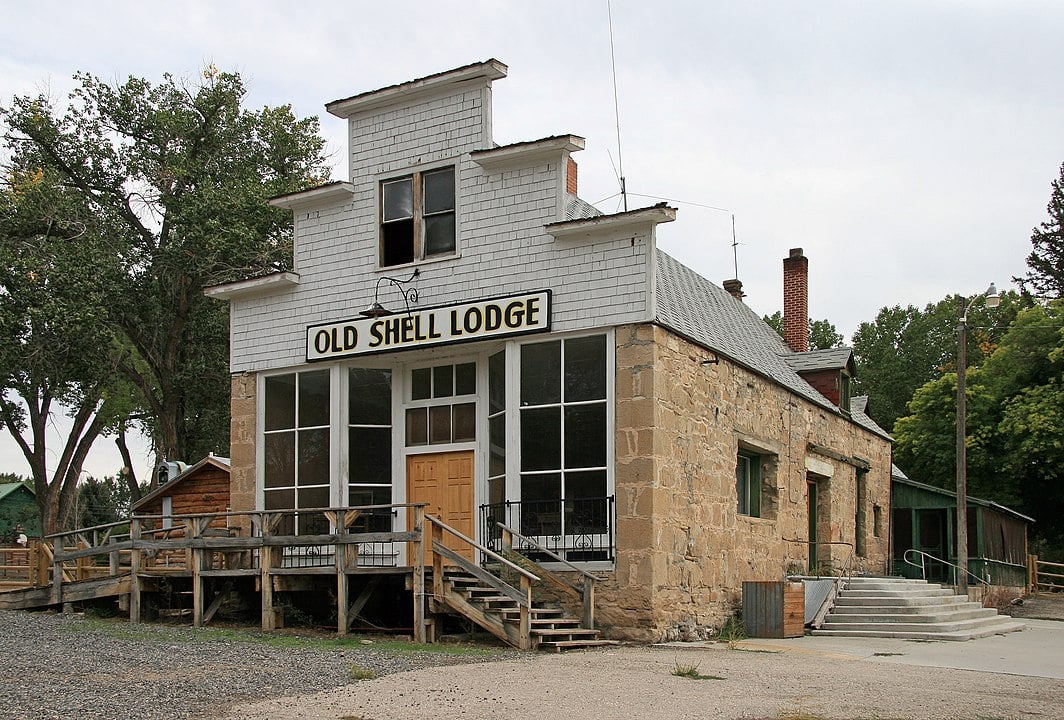Nestled within the breathtaking landscapes of Oregon’s Cascade Mountains lies the serene Cascade Lakes region—a haven for those seeking tranquility away from bustling city life. This area is dotted with secluded towns, each offering its own unique charm and a gateway to nature’s wonders. From tranquil lakeside villages to hidden forest communities, these towns provide the perfect escape for outdoor enthusiasts and peace seekers alike. Join us as we countdown the top 10 secluded towns in the Cascade Lakes region that promise solitude, natural beauty, and a touch of small-town magic.
10. Peaceful Retreat in Vida
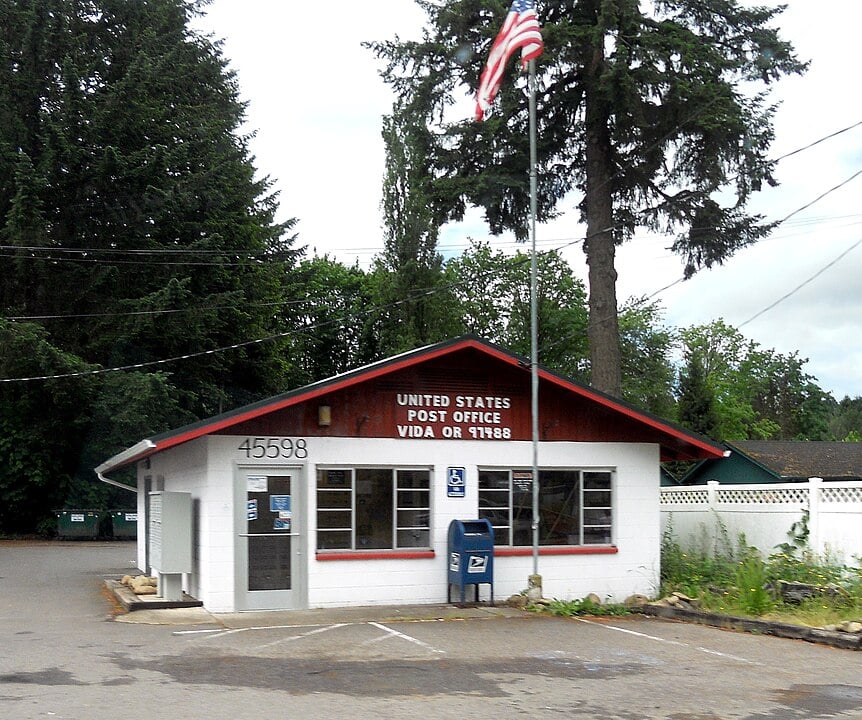
Vida is a hidden gem along the McKenzie River with a close-knit population of just over 400 residents. This tranquil town offers a plethora of activities like fishing for trout and salmon, rafting down the river’s gentle rapids, and exploring nearby hiking trails that wind through lush forests. The primary industries here revolve around tourism and outdoor recreation, catering to visitors who come to enjoy the natural splendor. What makes Vida truly secluded is its serene environment—free from the noise of urban centers, it provides a peaceful backdrop for relaxation and reflection. The absence of large commercial developments preserves its quaint, untouched atmosphere.
Where is Vida?
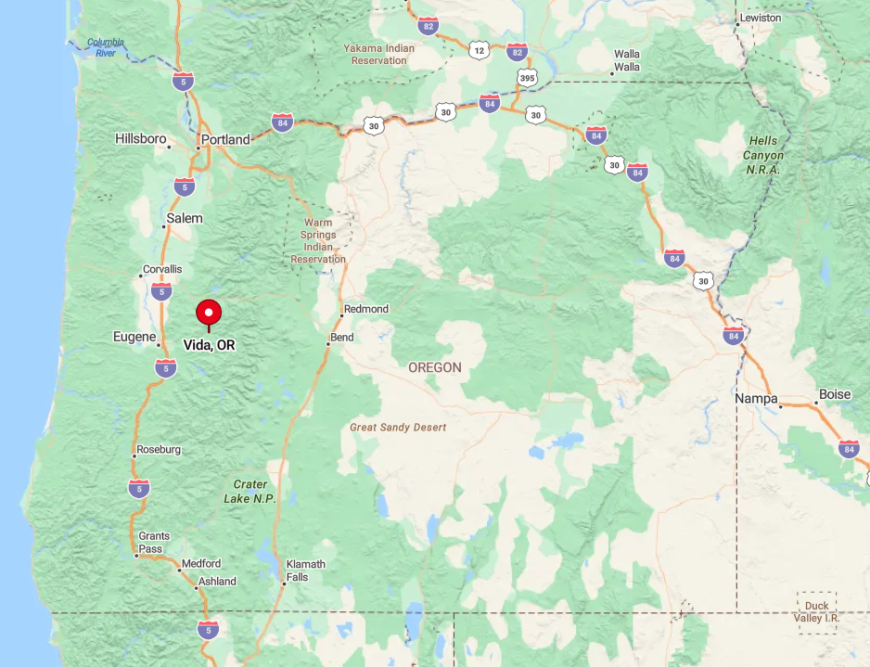
Located in Lane County, Oregon, Vida sits along the scenic McKenzie Highway (OR 126), approximately 30 miles east of Eugene. Its seclusion is amplified by the surrounding Willamette National Forest, which envelops the town in a blanket of greenery and wildlife. Accessibility is primarily via the highway, yet the winding roads through dense forests make the journey part of the secluded experience. This off-the-beaten-path locale ensures that Vida remains a quiet retreat for those in the know.
9. Serenity at McKenzie Bridge
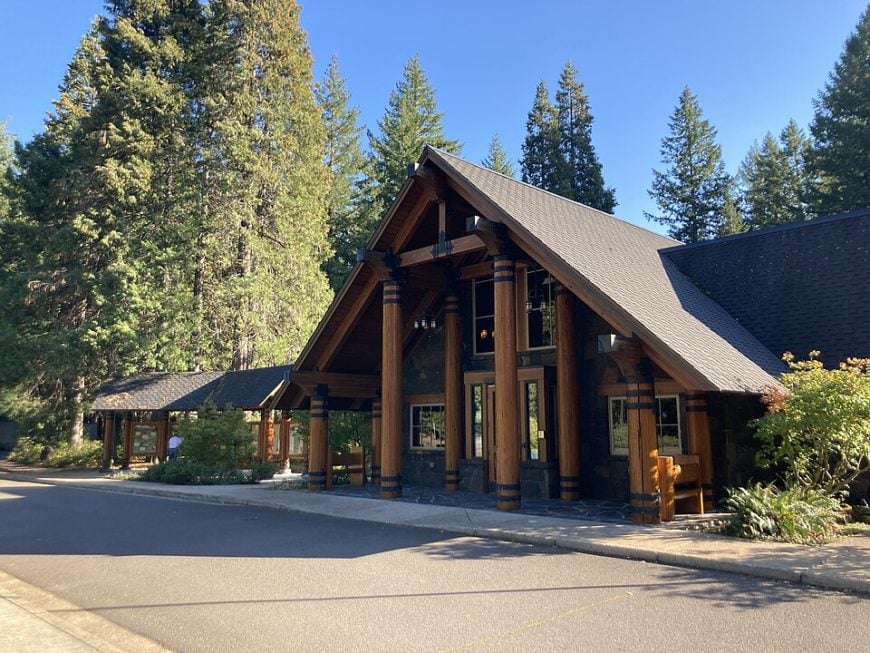
With a small community of around 500 people, McKenzie Bridge is a secluded haven nestled along the banks of the McKenzie River. The town is a paradise for nature lovers, offering activities such as fly fishing, hiking to nearby waterfalls, and soaking in natural hot springs. Local industries include small-scale tourism and services catering to outdoor enthusiasts. McKenzie Bridge’s seclusion comes from its remote location amid towering Douglas firs and the absence of urban development, allowing visitors to fully immerse themselves in nature’s tranquility.
Where is McKenzie Bridge?
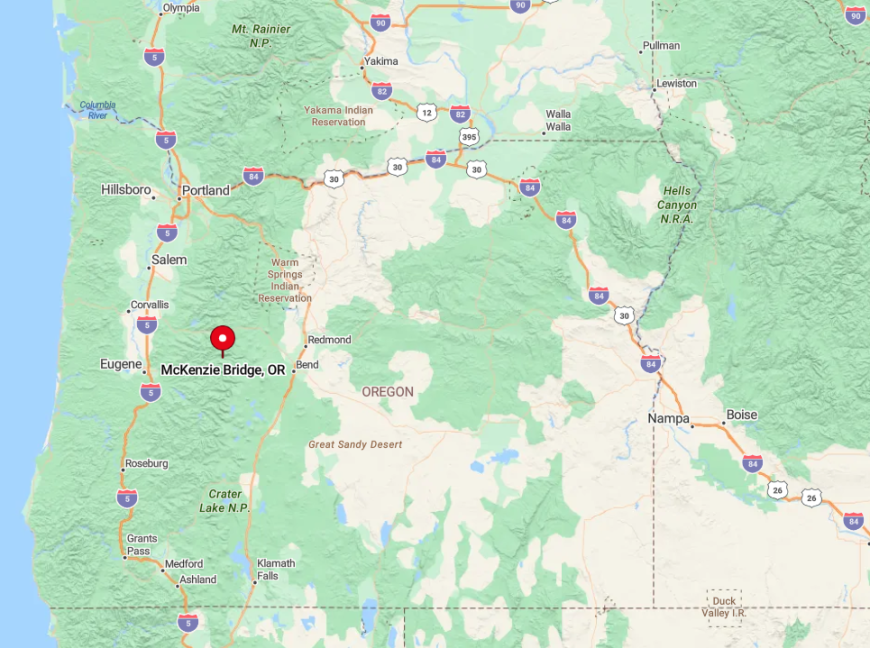
Situated in Lane County, McKenzie Bridge lies along Oregon Route 126, about 53 miles east of Eugene. Its secluded nature is due to its position within the Cascade Range, surrounded by rugged landscapes and dense forests. The town is accessible by a scenic drive through the Willamette National Forest, which contributes to its remote feel. The lack of major highways and nearby cities ensures that McKenzie Bridge remains a peaceful enclave away from the hustle and bustle.
8. The Remote Splendor of Blue River
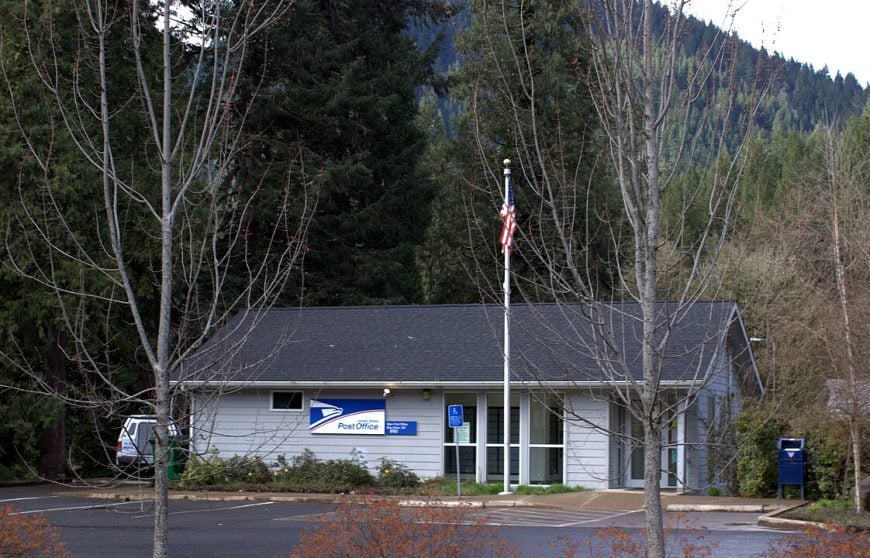
Blue River is a small community with a population of approximately 450 residents, offering access to pristine lakes, rivers, and hot springs. Outdoor activities abound, including kayaking on Blue River Reservoir, exploring nearby trails, and visiting the Terwilliger Hot Springs. The town’s economy centers around recreation and some logging activities. Blue River’s seclusion is enhanced by its surroundings—the untouched wilderness of the Cascades envelops the town, providing a serene environment free from urban distractions.
Where is Blue River?
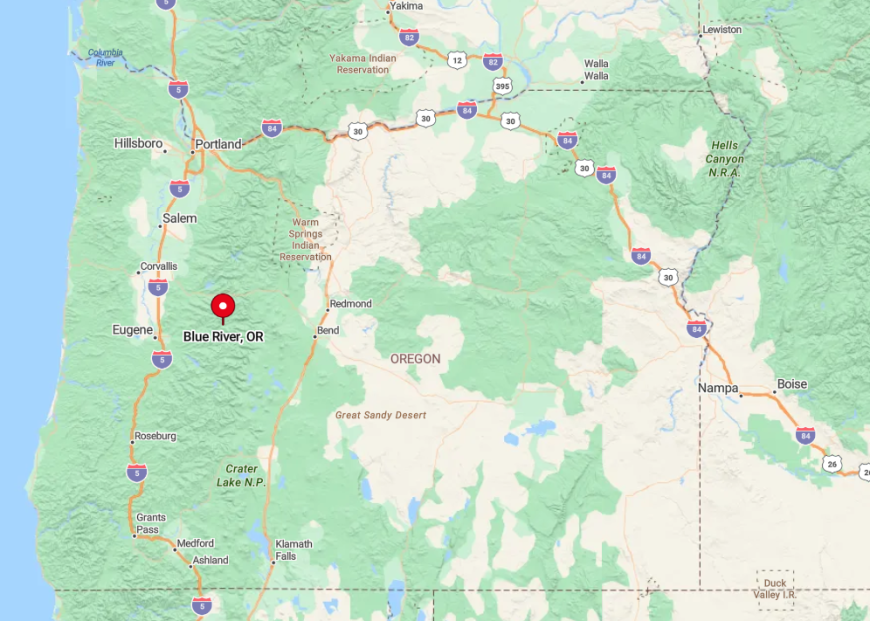
Located in Lane County along the McKenzie Highway, Blue River is about 40 miles east of Eugene. Encased by the Willamette National Forest, the town’s remote location offers a sense of isolation from larger population centers. The winding mountain roads leading to Blue River contribute to its off-the-grid charm. Accessibility is limited to those willing to venture through the forested landscape, ensuring the town remains a quiet retreat.
7. Discovering Westfir’s Off-the-Beaten-Path Charm
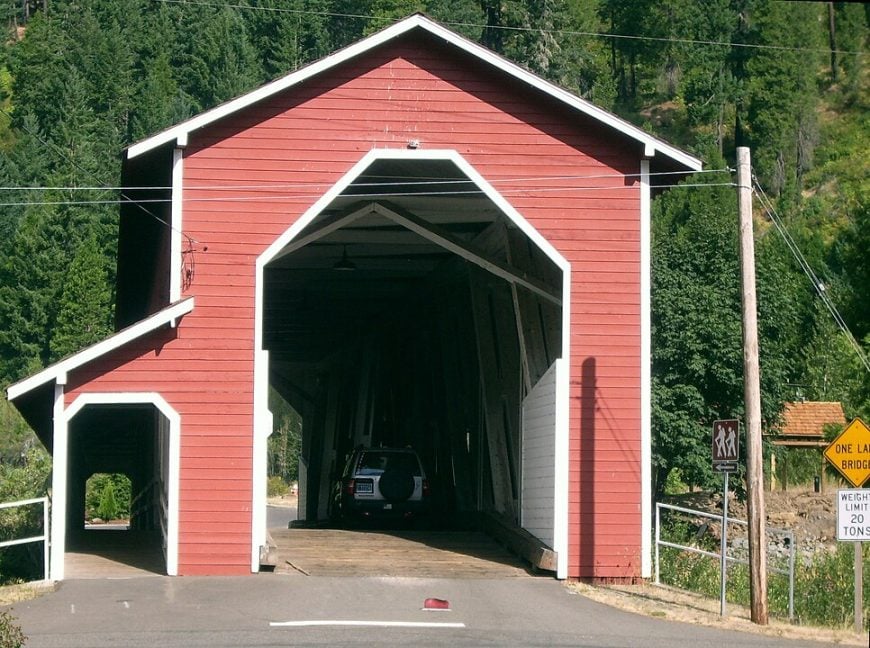
Westfir is a tiny town with around 250 residents, known for its historic Office Bridge—the longest covered bridge in Oregon. Visitors can enjoy hiking and mountain biking on the Alpine Trail and fishing in the nearby rivers. The local economy once thrived on timber but now focuses on outdoor recreation and tourism. Its seclusion stems from its location deep within the Willamette National Forest, offering a peaceful getaway surrounded by nature’s beauty.
Where is Westfir?

Nestled in Lane County, Westfir is situated near the North Fork of the Middle Fork Willamette River, about 40 miles southeast of Eugene. The town is accessed via Westfir Road off Oregon Route 58, making it somewhat secluded due to the limited routes in and out. The dense forest and mountainous terrain surrounding Westfir enhance its sense of isolation, making it an ideal spot for those seeking solitude and natural attractions away from crowded areas.
6. Escape to Crescent, Oregon’s Hidden Oasis
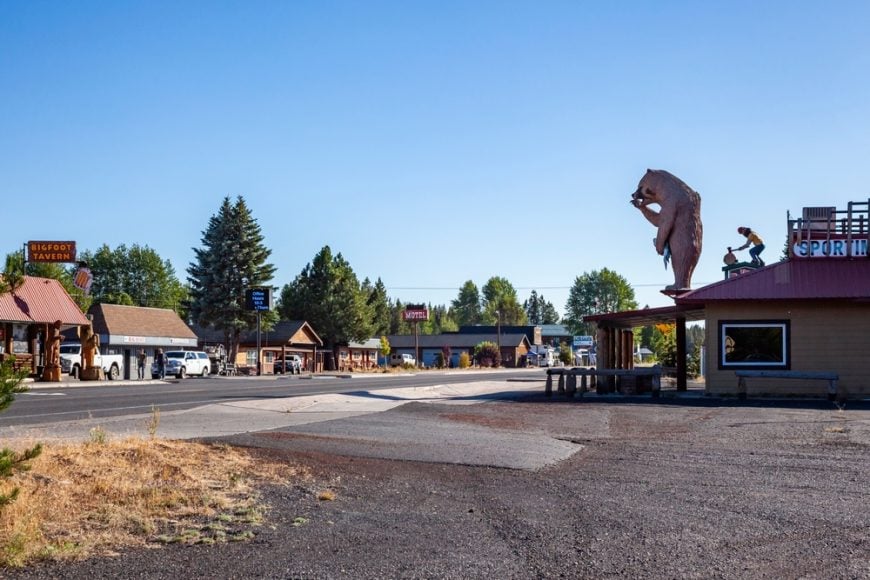
Crescent is a quiet town with a population of around 500, offering a peaceful atmosphere near the Cascade Lakes. Visitors can indulge in fishing, hiking, and exploring the nearby Deschutes National Forest. The town serves as a modest hub for travelers, with small businesses catering to outdoor activities. Crescent’s seclusion is attributed to its remote location and the vast stretches of forest that separate it from larger towns, providing a serene environment for relaxation.
Where is Crescent?
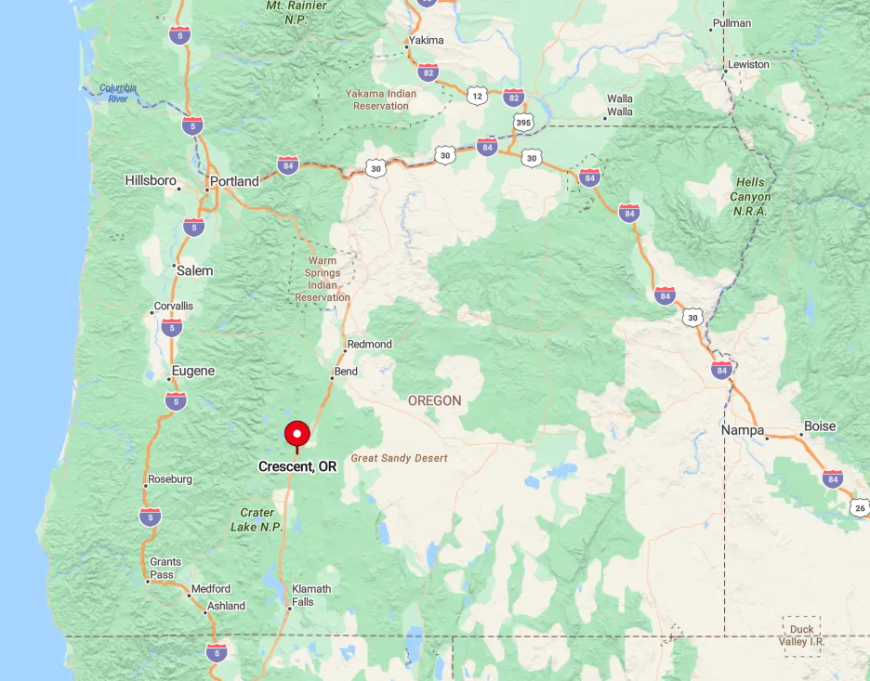
Located in Klamath County, Crescent sits along U.S. Route 97, approximately 70 miles south of Bend. The town is surrounded by the expansive Deschutes National Forest, which contributes to its secluded nature. Accessing Crescent involves a scenic drive through forested areas, reinforcing the feeling of escaping into a hidden oasis. Its location away from major urban centers ensures that Crescent remains a peaceful retreat for those seeking to disconnect.
5. The Secluded Beauty of Detroit
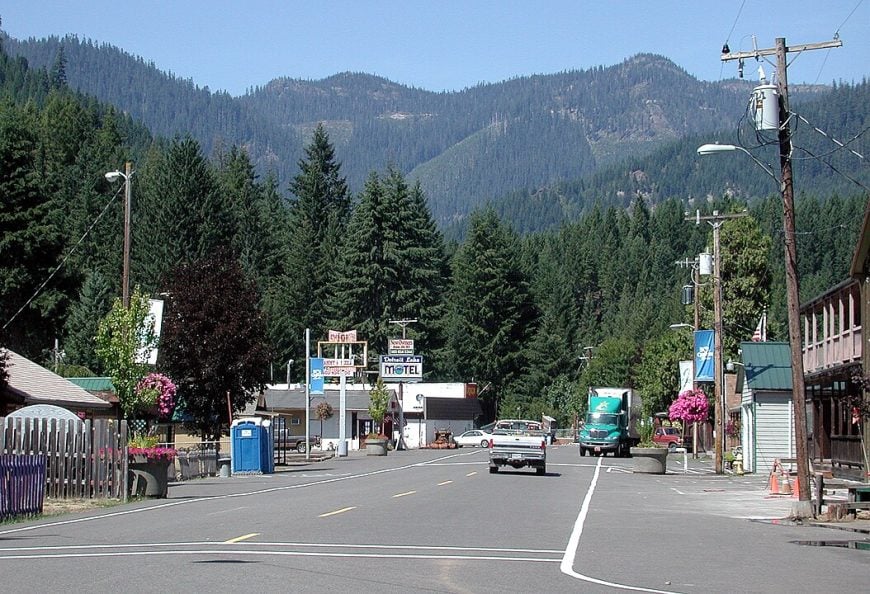
Detroit is a small lakeside town with a population of about 200 residents, nestled on the shores of Detroit Lake. The town offers stunning views and serves as a gateway to outdoor adventures like boating, fishing, and camping. Local businesses cater to tourism, with marinas and lodges supporting visitors. Detroit’s seclusion is due to its position within the Cascade Mountains and the surrounding Willamette National Forest, creating a serene setting removed from urban life.
Where is Detroit?
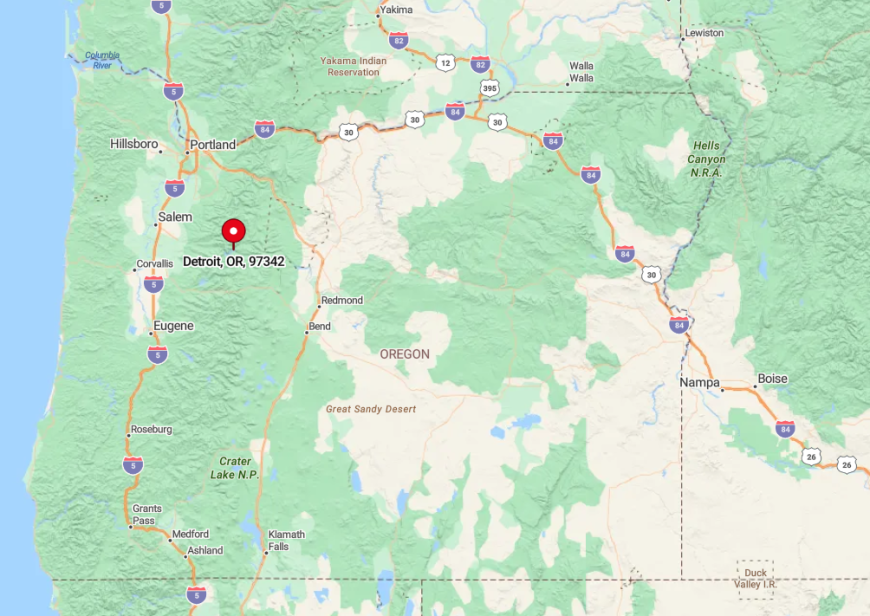
Situated in Marion County, Detroit is located along Oregon Route 22, approximately 50 miles east of Salem. The town’s remote setting is highlighted by the forested mountains and the expansive Detroit Lake. Access is primarily via mountain highways, which can be challenging during winter months, adding to the town’s secluded ambiance. The natural barriers and distance from major cities make Detroit a tranquil escape amid Oregon’s wilderness.
4. Unwind in Peaceful Oakridge
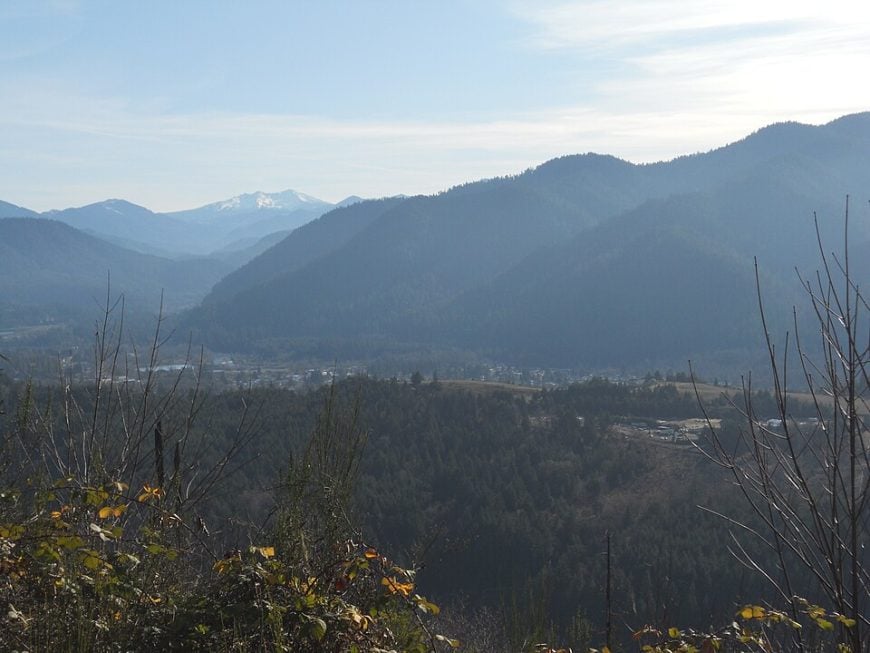
Oakridge, with a population of around 3,200, is known as the “Mountain Biking Capital of the Northwest.” The town is surrounded by scenic trails, rivers, and forests, making it a hotspot for mountain biking, hiking, and fishing. While historically a timber town, its main industries now include outdoor recreation and tourism services. Oakridge’s seclusion comes from its location deep within the Cascade Mountains, offering ample opportunities to unwind in nature’s embrace away from crowded urban spaces.
Where is Oakridge?
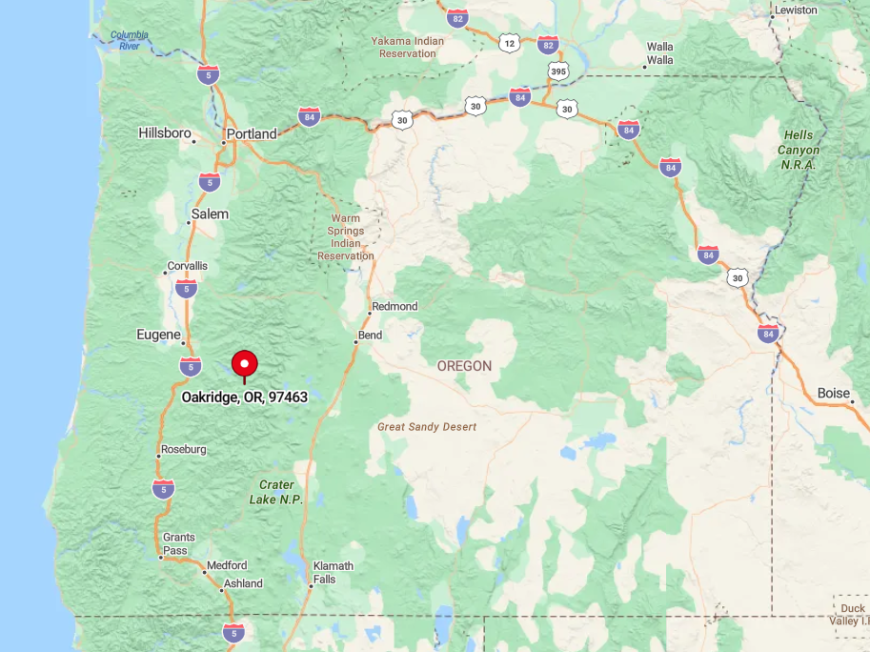
Located in Lane County along Oregon Route 58, Oakridge is about 40 miles southeast of Eugene. The town is nestled in the foothills of the Cascades, surrounded by the Willamette National Forest. Its seclusion is accentuated by the mountainous terrain and dense forests that make access routes picturesque yet detached from major highways. This isolation provides visitors with a sense of retreat and immersion in the natural environment.
3. The Quaint Allure of Camp Sherman
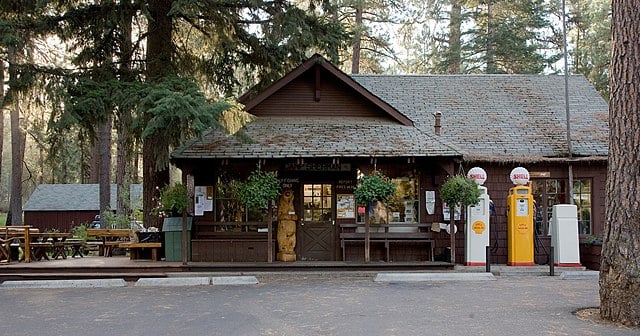
Camp Sherman is a tiny community of approximately 200 residents located along the Metolius River. Known for its rustic cabins and tranquil environment, visitors can enjoy fly fishing, hiking, and exploring the picturesque surroundings. The town has minimal commercial development, with a general store and a few lodges serving locals and tourists. Camp Sherman’s seclusion is due to its remote forest setting and the absence of modern distractions, offering a peaceful escape amid towering pines.
Where is Camp Sherman?
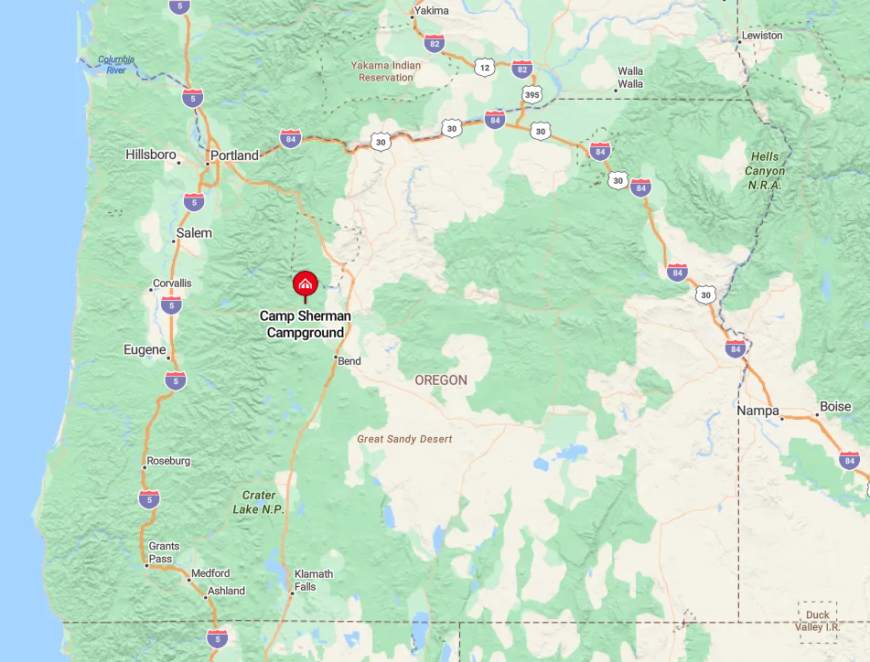
Situated in Jefferson County, Camp Sherman is accessible via Forest Road 14 off Oregon Route 126, about 14 miles northwest of Sisters. The town’s secluded location in the Deschutes National Forest means it’s enveloped by wilderness, with the Metolius River adding to its serene atmosphere. The journey to Camp Sherman involves traversing forested roads, reinforcing the feeling of stepping back into a simpler, quieter time away from urban life.
2. Exploring the Hidden Gem of Gilchrist
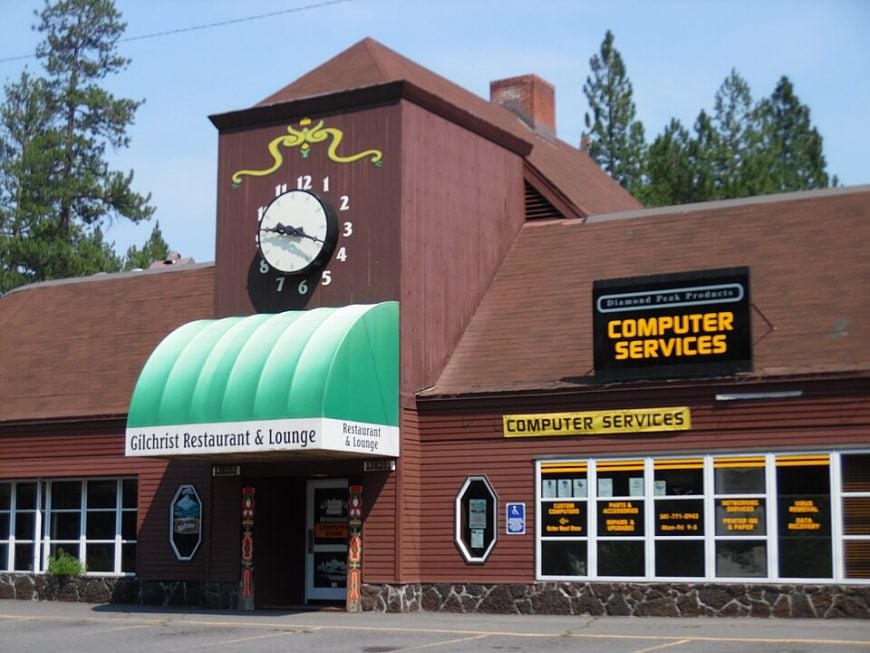
Gilchrist is a small, often overlooked timber town with a population of around 700 residents. Surrounded by lush forests, it offers a quiet retreat where visitors can enjoy hiking, wildlife viewing, and discovering the area’s history. The town’s economy has traditionally been based on timber, and it retains much of its historic character. Gilchrist’s seclusion is enhanced by its location away from major tourist routes, providing a peaceful environment steeped in natural beauty and small-town charm.
Where is Gilchrist?
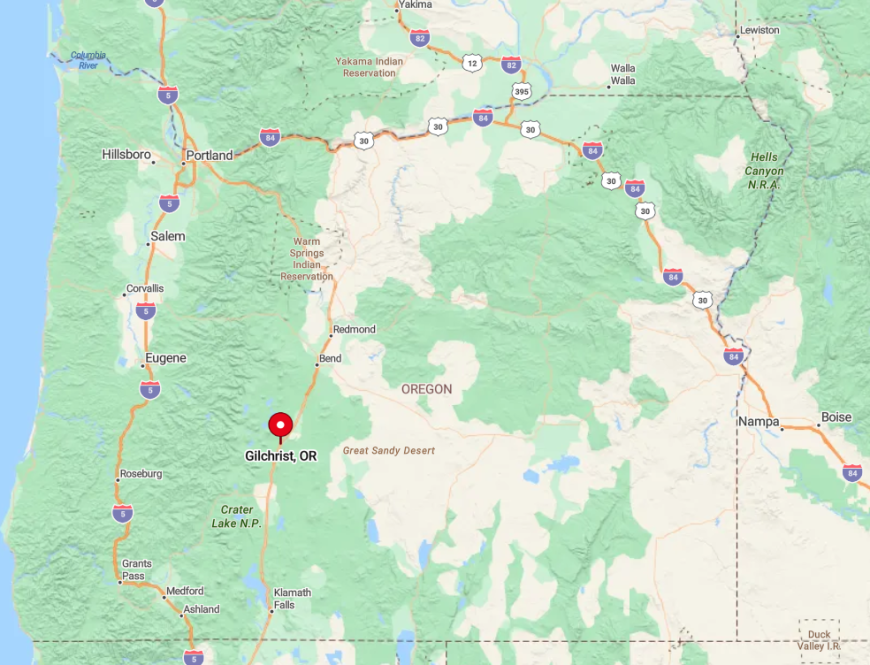
Located in Klamath County along U.S. Route 97, Gilchrist is about 45 miles south of Bend. The town is nestled amid the Deschutes National Forest, which contributes to its remote feel. Access is straightforward via the highway, yet the surrounding vast forests and lack of nearby urban centers ensure Gilchrist remains a secluded haven. Its off-the-beaten-path location invites visitors seeking a tranquil getaway immersed in nature.
1. Serenity in Crescent Lake Junction
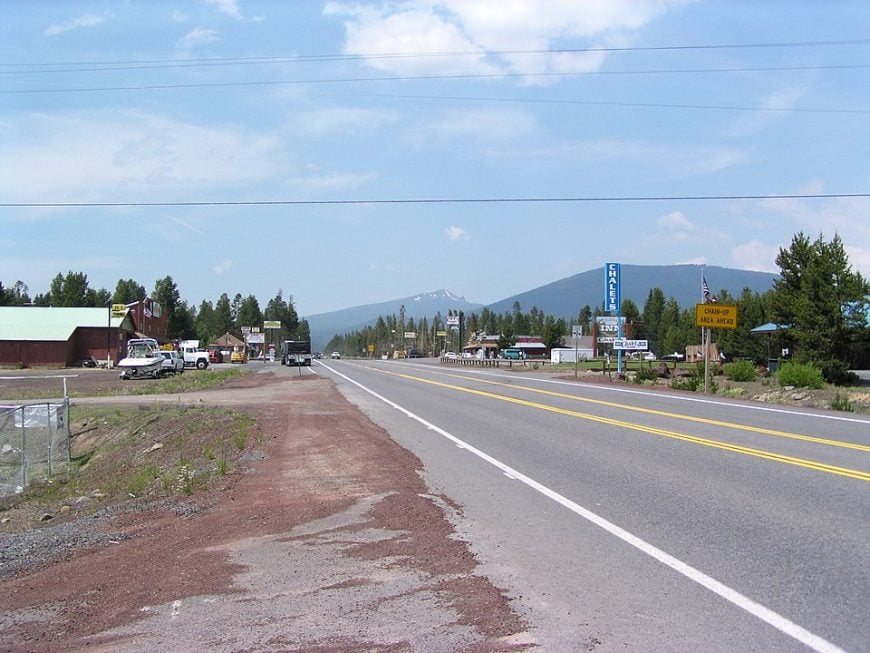
Crescent Lake Junction is a secluded town with a small population of around 120 residents, nestled among the Cascade Lakes. It’s perfect for outdoor enthusiasts seeking solitude, offering activities like fishing in Crescent Lake, hiking nearby trails, and skiing at the Willamette Pass Resort. The town’s main industries revolve around tourism and services catering to visitors of the surrounding natural attractions. Its seclusion is a result of its remote mountain location and the enveloping forests that provide a serene backdrop away from the noise of city life.
Where is Crescent Lake Junction?
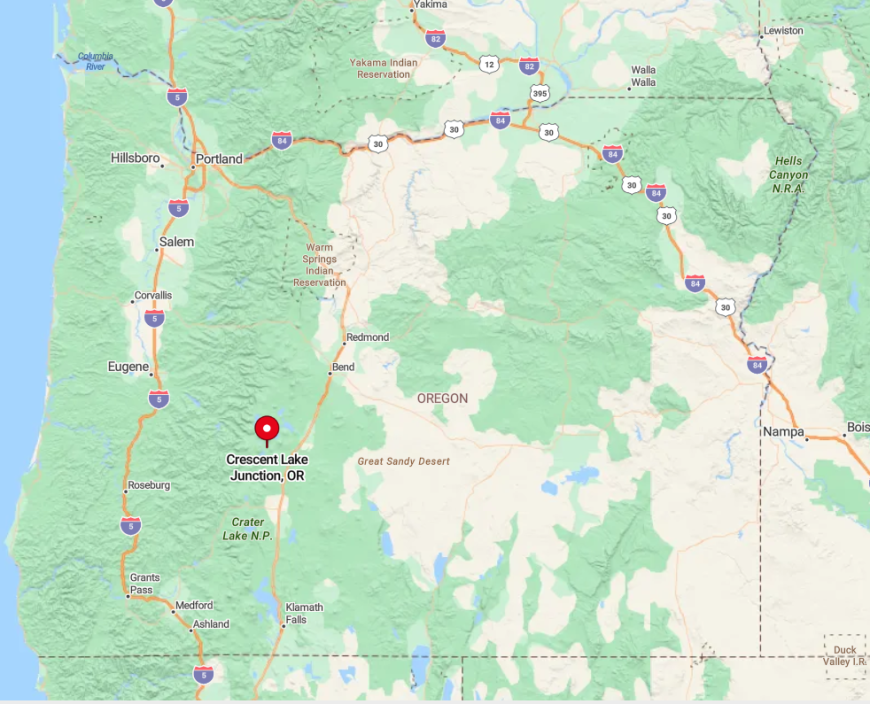
Found in Klamath County, Crescent Lake Junction is located at the intersection of Oregon Route 58 and Crescent Lake Highway, about 75 miles southeast of Eugene. The town is surrounded by the Deschutes National Forest and is near several alpine lakes, contributing to its isolated feel. Access involves driving through mountainous terrain, which can be both scenic and challenging, especially in winter. Crescent Lake Junction’s remote setting ensures a peaceful retreat for those looking to connect with nature in a secluded environment.



